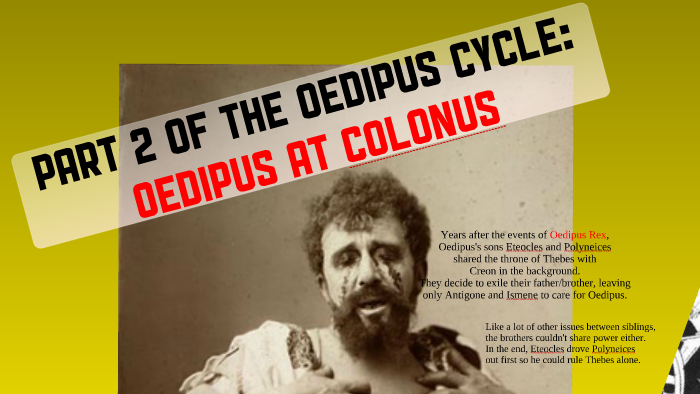
The religious-spiritual dimension allows the narratives to move beyond bitter tragedy they become stories of reconciliation that incorporate optimistic visions of death and life.

Both works portray the journeys of alienated, polluted sinners who achieve re-integration, redemption, and become saviors. The stories of Oedipus and Walt differ - for example, Walt commits a sin freely and lives in guilt, whereas Oedipus suffers from involuntary actions and insists on his innocence - yet it is surprising how many similarities exist. The parallel between the two literary productions suggests a comparative analysis, a perspective that might reveal trans-temporal themes and universal wisdom, independently of any question of influence. However, by integrating religious themes, Gran Torino takes the audience beyond tragedy. Depicting the journey of Walt, a Korean War veteran and a retired autoworker, the film begins with Walt’s alienation from society and ends with his funeral, a seemingly tragic chronicle. Gran Torino, a 2008 American drama film directed by Clint Eastwood, parallels the Sophoclean arc. Its narrative culminates not in bitter tragedy, as does Oedipus the King, but in a gesture toward redemption. The play preserves traditional tragic elements but achieves a breakthrough in its religious contemplation.

Postdating Oedipus the King, it begins years after Oedipus’ exile and ends with his death. Oedipus at Colonus is one of the three Theban plays written by the ancient Greek tragedian Sophocles.

Finally, the paper concludes with the idea that the two stories express an optimistic view toward life and death: a polluted sinner can gain peace through positive social relationships and can be saved by external atonement moreover, sinners can become saviors. The paper’s analysis of the religious-spiritual dimension in the two narratives shows how tragedies can be transformed into stories of reconciliation. The paper first analyzes the shared arc of narrative: both stories depict the journey of alienated, polluted sinners moving away from isolation and sin by attaining humbleness, re-establishing social relationships, and atoning externally for their past sins, the sinners eventually become re-integrated into communities and acquire a spiritual sensibility.

The two literary productions, although remote as they seem, contain significant parallels and similarities that reveal trans-temporal themes of human life. This paper presents a comparative analysis of Oedipus at Colonus, a play written by the ancient Greek tragedian Sophocles, and Gran Torino, an American film directed by Clint Eastwood.


 0 kommentar(er)
0 kommentar(er)
